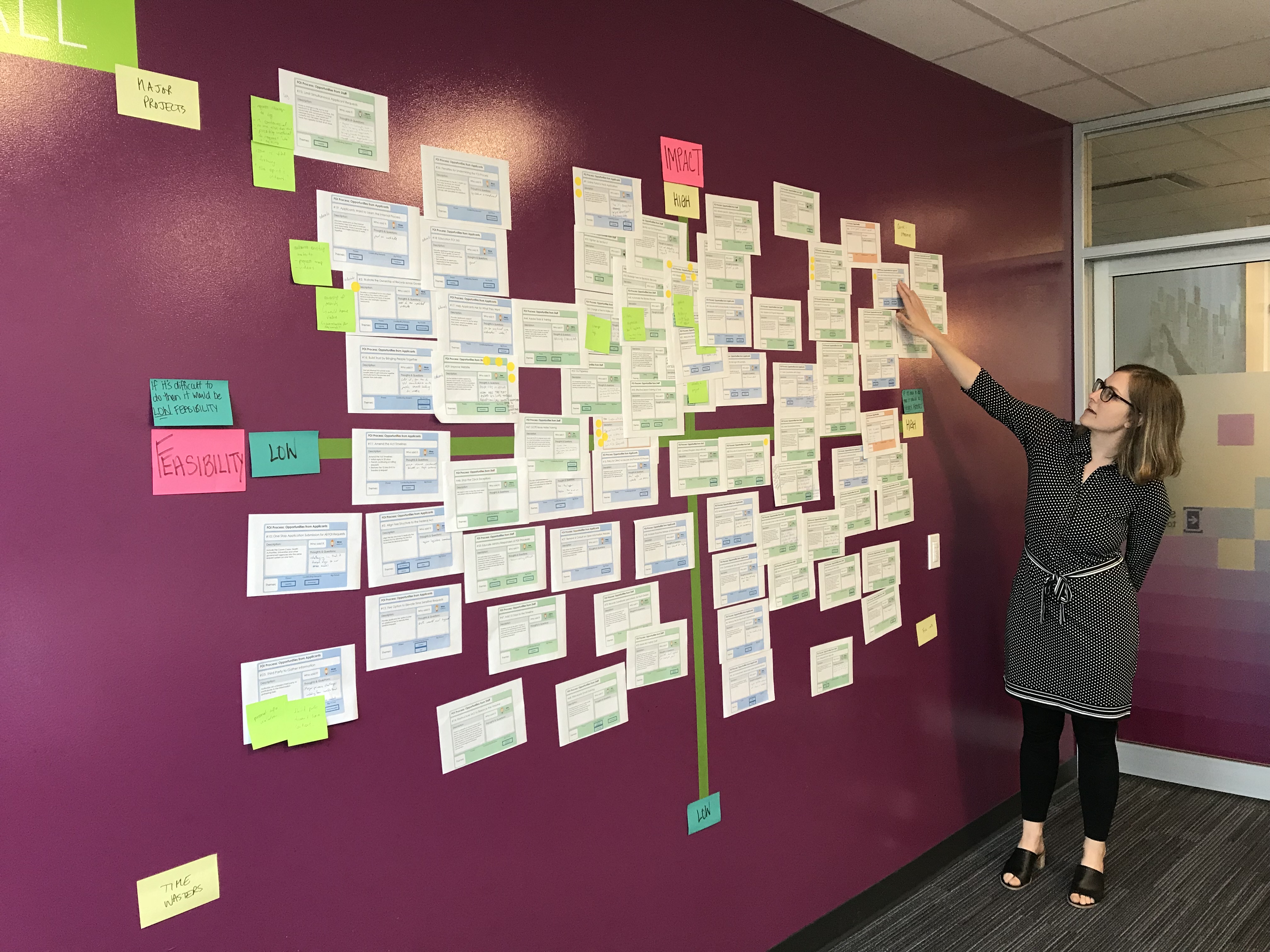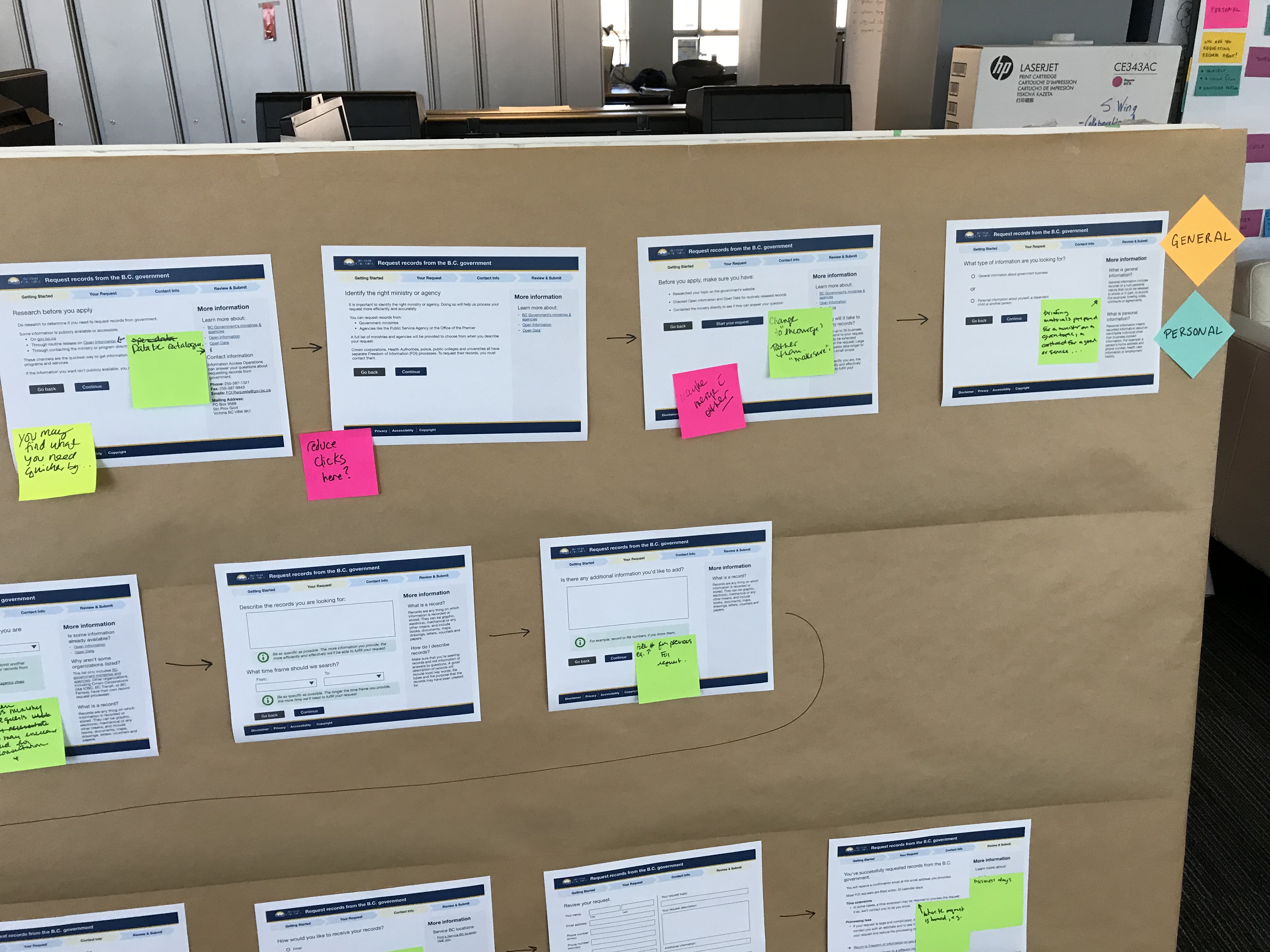Making it easy to access government records
Date completed: 2018
Client: Ministry of Citizens' Services
Context and questions
The Freedom of Information and Protection of Privacy Act (FOIPPA) enables the public to request and obtain government records. The Freedom of Information (FOI) process is a fundamental part of a transparent and open government, yet can be complex for both applicants and government staff to navigate.
FOIPPA requires that public bodies reply to an access request within 30 business days of receival, but the volume and complexity of requests makes it difficult to keep up with demand. The legislation does permit for extensions to be taken in some cases. On average, 2 million pages are processed per year.
The Corporate Information and Records Management Office (CIRMO) wanted to improve the FOI process for everyone. The project had three goals:
- Understand the current state of the FOI process
- Develop opportunities and prototypes to improve service delivery for access to government records
- Recommend enhancements to the process based on the needs of citizens and stakeholders
Our approach
Working together, CIRMO and the Service Design Team took a human-centred approach to understand the FOI process.
The project included four phases:
- Understanding the process. The team conducted interviews with 45 people (including 28 staff members and 17 applicants) and then created a journey map and eight personas to represent user stories
- Mapping challenges and prioritizing opportunities. After theming the interviews, the team mapped out the most common challenges faced by citizens making requests and government staff processing the requests. The team also prioritized all opportunities, ranking them in order of feasibility and impact
- Prototyping the application form. A new online FOI application form was created. The team iterated from a paper sketch to a high-fidelity prototype, then took the prototype into the field for testing and feedback from staff and citizens
- Identifying next steps. The prioritized opportunities were transformed into a roadmap to help guide CIRMO’s future work and an Implementation Plan was created to support the launch of the new online FOI application


Outcomes that matter
Shifting to a human-centred service
After interviews with citizens, FOI user personas were created. This not only helped the project team design a better prototype, it also helped the staff who process and coordinate the requests see the FOI system as a human-centred service.
Helping citizens submit successful FOI requests
Citizens told us they simply didn’t know the right wording to use when submitting an FOI request. Were they asking for the right information? Based on what was learned during user testing, the team created a prototype to address the need for more user assistance. The prototype guides an applicant through the process with on-screen support and resources.
Making the prototype a reality
Following the completion of the project, CIRMO actioned the Implementation Plan. Working with the BCDevExchange and using the prototype as a starting point, the new online FOI application launched Summer 2019.
Artefacts
Journey Map: The Journey Map details how a request currently moves through the FOI phases and interacts with multiple internal roles. The map also demonstrates common areas of confusion or delay. (Internal document)
Personas: Based on project research, personas were created to represent different FOI users. Personas helped the project team answer the question, “Who do we design for?” (Internal document)
Prototype: The online application prototype guides citizens through the type of request they’re making and provides resources and support for making an effective request. (Internal document)
Implementation Plan: The Implementation Plan contains a detailed roadmap, as well as a measurement plan and testing script to guide the online application from prototype to reality. (Internal document)
